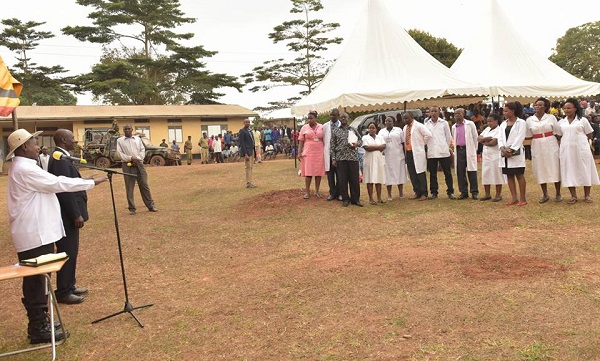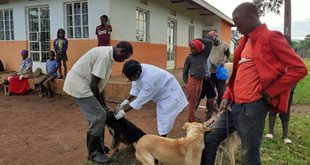
COMMENT: By Moses Mulumba
Museveni’s Nakawuka moment could be an opportunity to revisit our health governance
The country recently witnessed President Yoweri Museveni ‘order’ the redeployment of health workers at Nakawuka Health Center III. In his order, the President seemed to have concurred with the communities on fighting non-functional health facilities.
The President’s action has since elicited mixed reactions in the media and public. His conversation with the community and eventual decision of orders for the redeployment of health workers reminded me of the ‘Bimeeza’ public discussion radio forums which a few years back were banned for, among other reasons, allegedly politicking and inciting communities against the government programs.
I took Museveni’s actions in Nakawuka as an opportunity to reflect on Uganda’s governance history and how this has shaped the health system over time. To understand the President’s decision on the health workers at this Nakawuka facility one needs to also revisit the governance principles that were underlying the National Resistance Movement (NRM) in its early years.
On coming to power in 1986, the NRM branded itself as a political system that was broad-based, inclusive, non-partisan and followed the principle of participatory democracy. This system challenged past governments as having over centralised power and applying undemocratic practices. As such, the NRM was providing an option of a broad-based government encompassing all elements of the Uganda political spectrum.
As part of the solution, the NRM introduced a system of local councils – from the village level to the district level. These were aimed at ensuring participation of people in the political process and in critical decision making in vital sectors including health and education.
This created new power centers and marked a departure from the more centralised system of governance. It also promoted popular participation which was revolutionary and a departure from the previous arrangement where the central government made even the minutest decision.
This was also reflected in the institution of the constitution making process which would be based on principles of consultation and participation of the population. Indeed the famous Ten Point Program emphasized that democracy must have three elements including: parliamentary democracy, popular democracy, and decent level of living for every Ugandan.
This approach was later legitimised as government policy for effective service delivery in the 1995 Constitution and the local government system which substantially devolved powers previously exercised by the central government to the district local authorities.
The healthcare delivery system was also designed along the same decentralised system with a corresponding health unit level for each level of local government or administrative unit. The first Health Sector Strategic Plan – 2000/1-2004/5 introduced structures such as the Village Health Committees which were supposed to be established in every village to be responsible for a number of things; including the identification of community’s health needs and taking appropriate measures. The spirit of these committees has been maintained in the subsequent revised Health Sector Plans including the most recent Health Development Plan. It is also striking that the first National Health Policy and the subsequent revised Health Policy also recognise these committees. The committees have since been adopted in various forms including Health Unit Management Committees (HUMCs) and Hospital Boards. The policy also required the establishment of a National Health Assembly with adequate representation from the district to discuss community interactions with health service delivery.
It is clear from these frameworks that community participation in the health sector in Uganda is hinged on these governance structures which are based at the lowest level of service provision.
For me, as a person interacting with the performance of the health system, I believe that community participation is still critical and it ought to happen within the defined governance structures at these lower levels. Any interventions of the higher authorities ought to tread carefully and not portray citizen participation in the delivery of health care as opposing those delivering the care. A discursive space ought to be provided in which the communities have an opportunity to voice and inform decision-making in matters of health; including the quality of care they receive at the public health facilities.
While I believe that the President’s decision on Nakawuka was important, it may have trampled on the NRM’s comprehensive ideological thinking on decentralising power and decision making. The effect was to disempower the governance structures envisaged in the health system as central for citizen participation in health decision making. The philosophy of the movement system is embedded in these structures and the communities ought to shape health decision making through these structures.
My experience indicates that no single structure of health governance has been as negated as the Health Unit Management Committees. These units are the first intersection between the communities and the health care system. Unfortunately a number of factors have affected their functionality and the President’s intervention in Nakawuka is testimony of the effect.
In my view, the higher authorities ought to invest in the functionality of these governance structures to enable them interact with communities as a way of dealing with the current challenges of delivering health care in limited resources settings. We ought to avoid the ‘Bimeeza’ approach in health decision making especially at the points of health delivery. Health governances ought to be from bottom up – and not up to bottom.
****
The writer is a lawyer practicing Health Law and Policy
****
editor@independent.co.ug
 The Independent Uganda: You get the Truth we Pay the Price
The Independent Uganda: You get the Truth we Pay the Price


